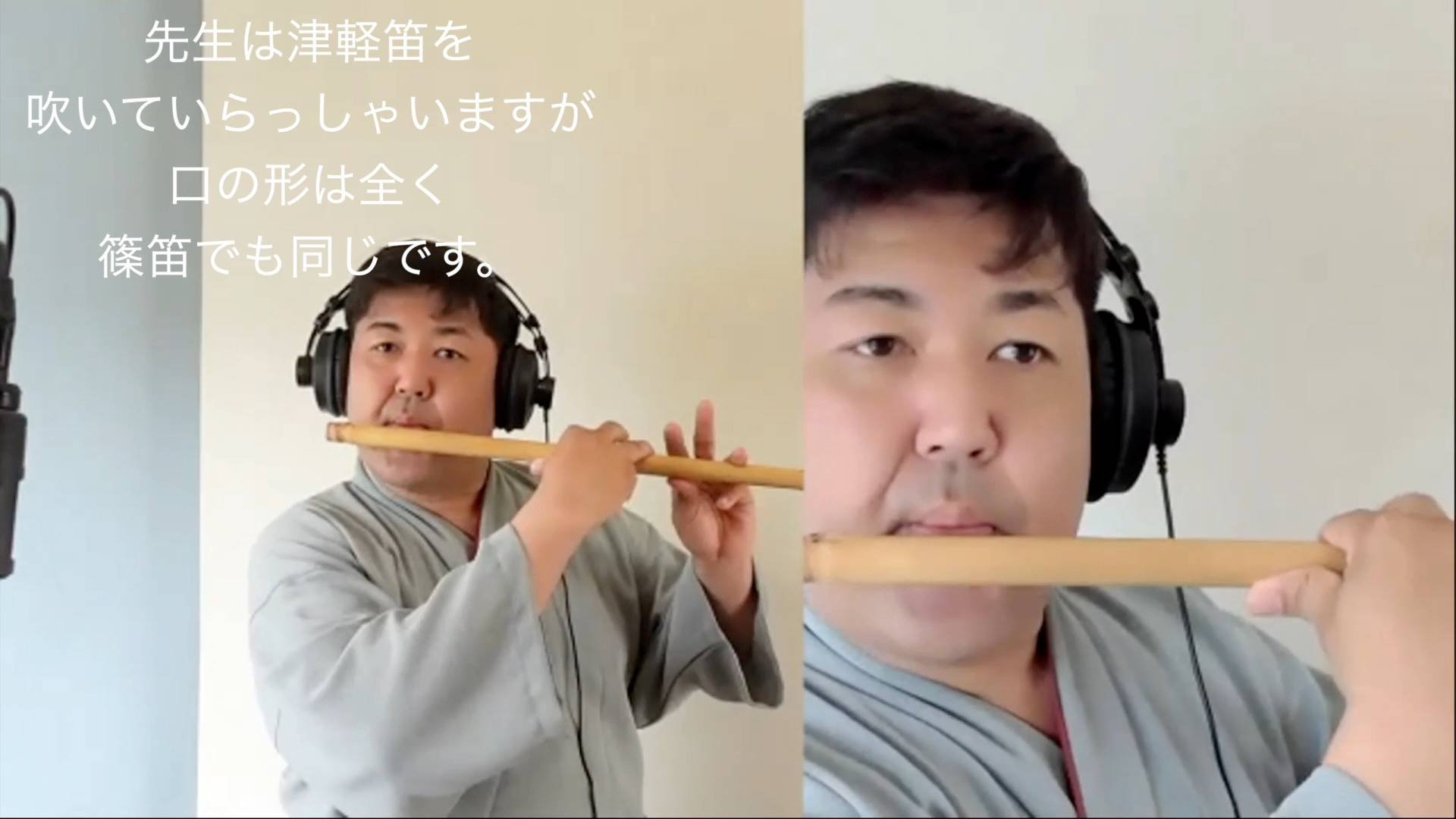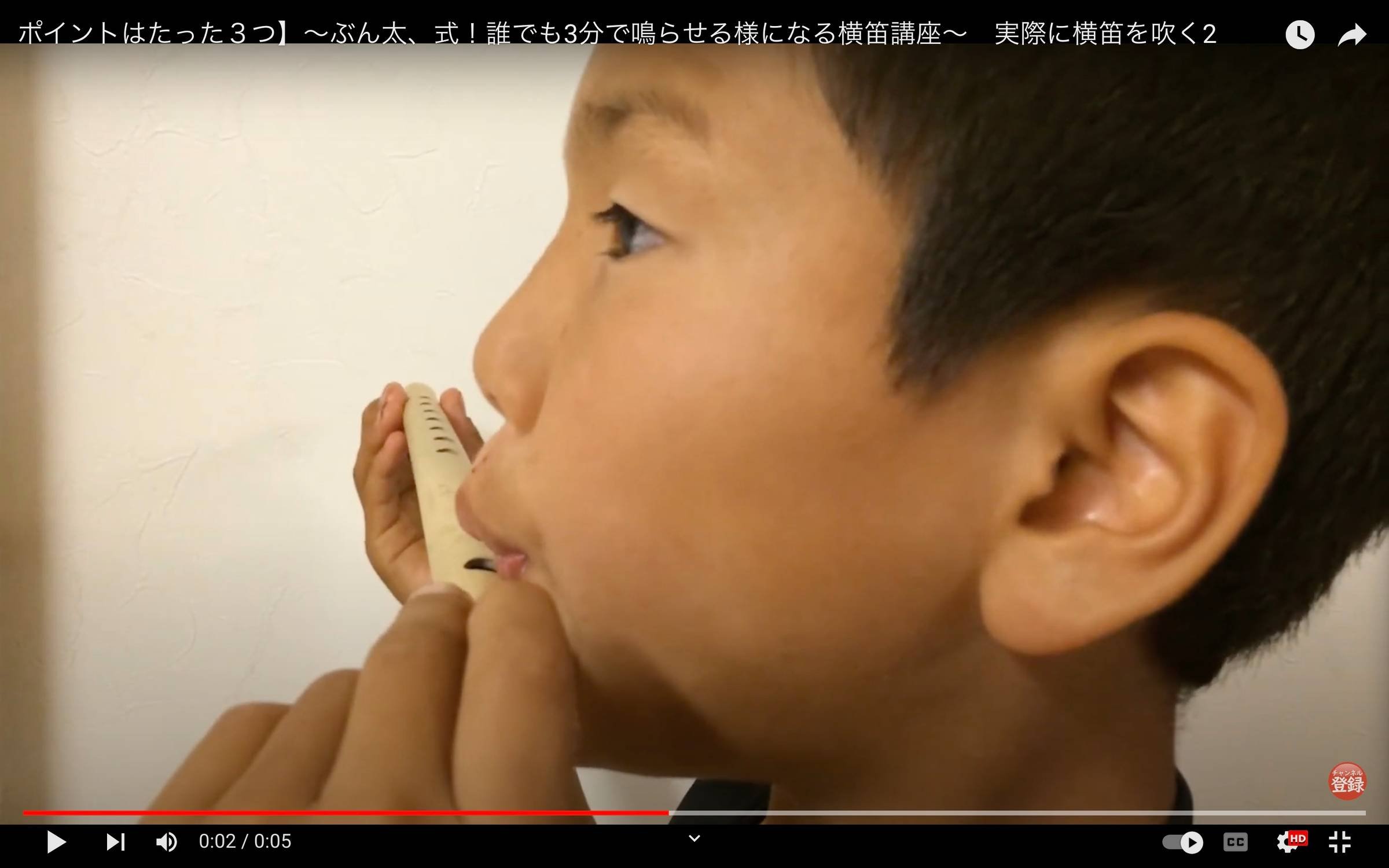Common Shinobue Myths DEBUNKED!!
Common Shinobue Myths Debunked!!
Here are the top myths about shinobue embouchure that I see on the internet or hear from people. I'm going to debunk them all! Let's get started!
Myth #1: To create a good shinobue embouchure, smile.
A smiling embouchure can create tension in your lips, which often results in an aggressive and tight tone. To achieve a beautiful and round tone, it’s essential to relax your lips as much as possible. While your lips cannot be completely relaxed—since you need to form an embouchure—it should be your top priority to create an embouchure with minimal tension as you progress in your shinobue journey. This is an ongoing process; you’ll build your embouchure every day, and it’s not something you can master overnight.
My teacher, Bunta sensei, says your best embouchure is like what you do when you kiss a baby. Your lips should be soft and puckered for a beautiful and round shinobue tone.
Myth #2: You need to blow harder with your mouth for kan on.
Scientifically, your breath may be faster while playing kan on. BUT, the moment you consciously try to increase your breath for kan on, I can guarantee that your tone will become windy and unpleasant. It's better to focus on slowing down your breath for kan on, as most people tend to blow way too much air way too fast when playing shinobue. Avoid the mindset of needing to speed up your breath with your mouth—unless you want a windy tone for a specific note as an effect.
Think "slow breath" for kan on, and even slower for ryo on. For ryo on 1 and 2, aim for a breath that is "snail slow."
It's important to note that a slow breath does NOT mean a weak, cautious, or frail breath. The breath for shinobue must always be supported by the lower body and sound rooted and secure.
It should feel like you are SLOWLY pushing a car. You need to put a lot of power behind it, but it is slow. The power comes from your lower body and not your mouth.
Myth #3: To get rid of the windy sound, make your hole on your lips smaller.
It's easy to think that a windy tone is caused by having too large an opening (aperture) in your lips, which allows too much air to escape. However, many other factors contribute to a windy tone. Attempting to make your aperture smaller often leads to tight lips, and tight lips can create a tense tone; you can still produce windiness even with tight lips.
When I started studying with Bunta sensei, he repeatedly advised me to "open your lips more" because mine were too tight.
If your aperture is genuinely too large (though this is not a common issue, as many people have overly tight lips), simply close your mouth and then open it slightly to create the desired aperture. When you think about "opening" your mouth, you naturally relax it. Avoid trying to decrease your aperture by tightening your lips.
Myth #4: To play kan on, I have to change my lips.
When you look at your embouchure in the mirror, your embouchure for playing ryo on and kan on should look exactly the same.
You don't tighten your lips for kan on.
I do feel I create more space between my upper teeth and upper lip when I play kan on, but that happens inside my mouth and it is not detectable from outside.
When I first saw Bunta sensei play low and high and super high notes without changing the embouchure at all - always relaxed - I was amazed. But he taught me how to do that (it's been 4 years and still learning more) and my shinobue tone changed completely.
Myth #5: My lips are too (fill in the blank) to play shinobue well.
All kinds of lip shapes can play shinobue wonderfully! There is no particular shape that is more advantageous for shinobue playing.
So you can do it too!!!!


